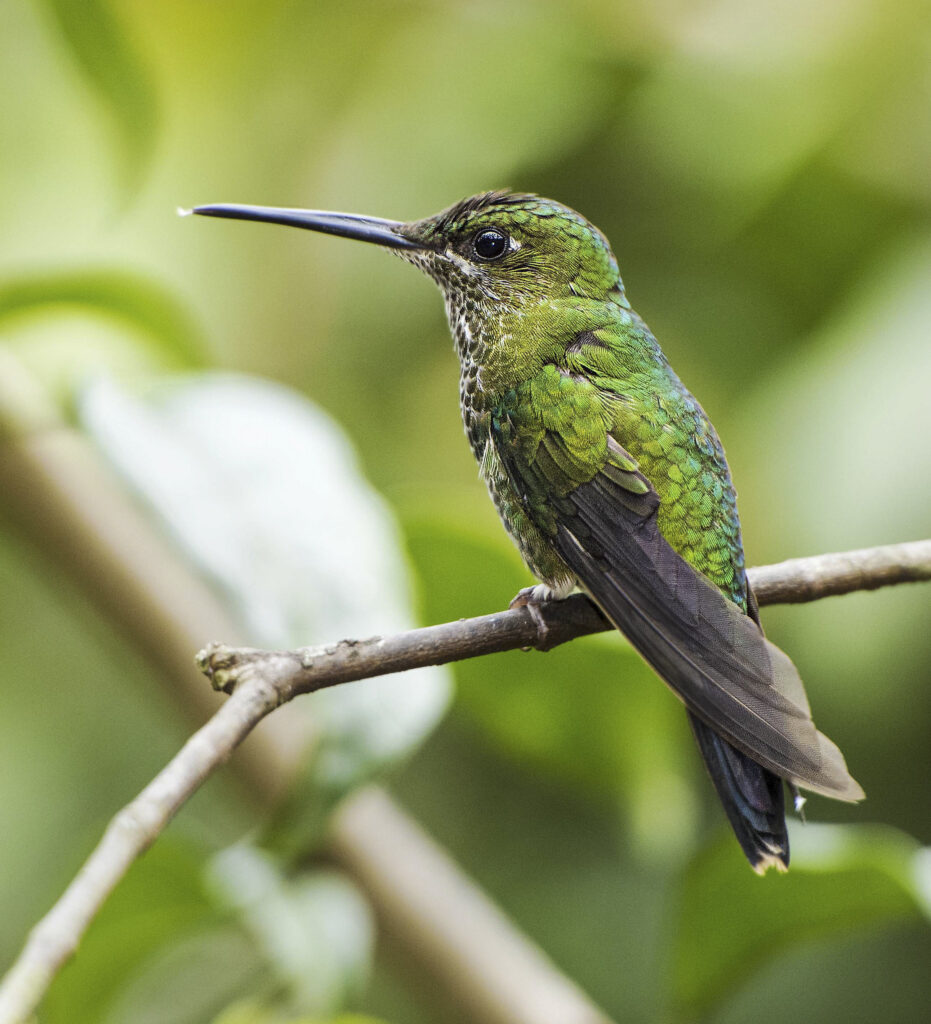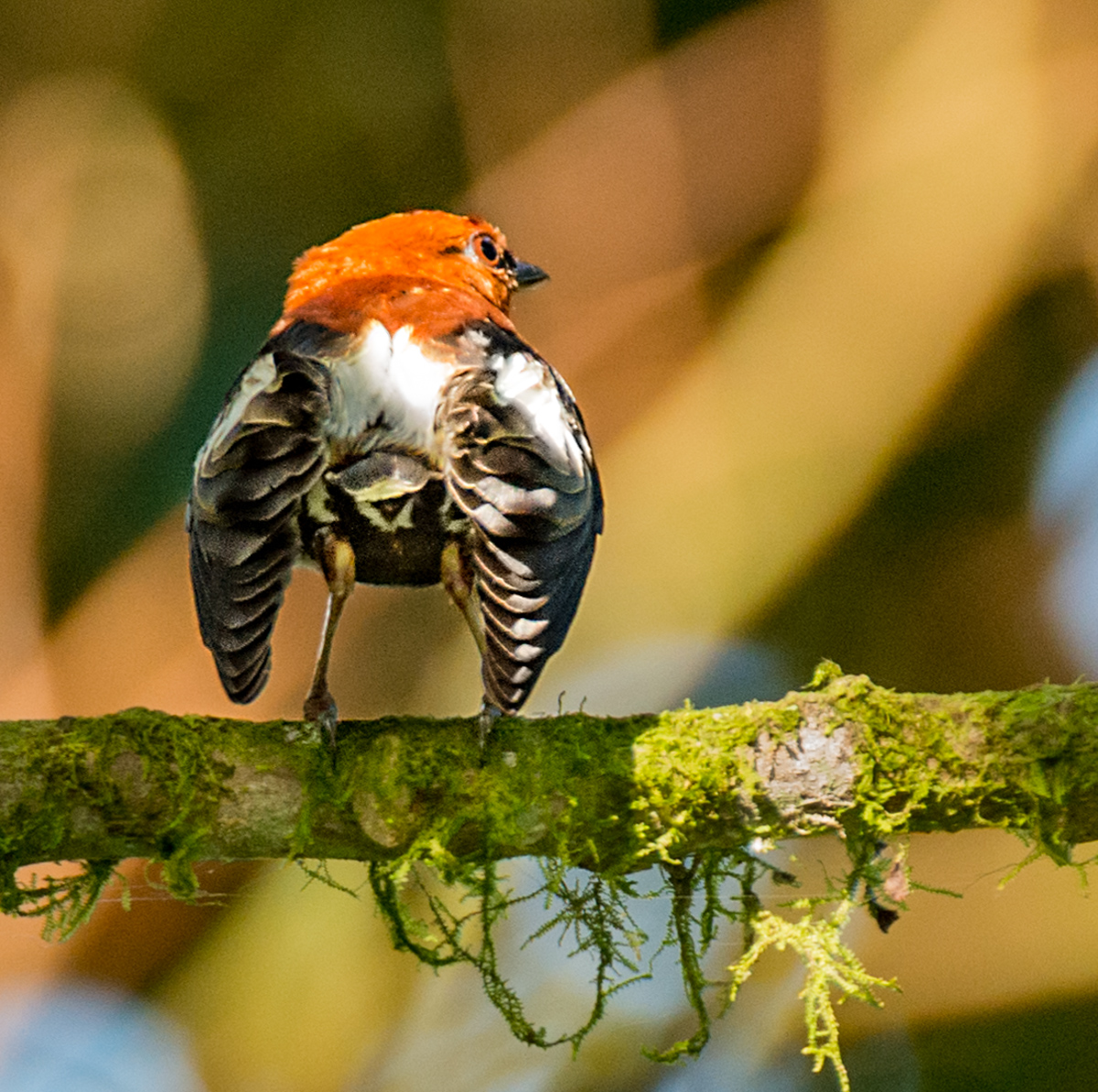
By Daniel J. Lebbin, Vice President of Threatened Species, American Bird Conservancy
In 2017, Richard Prum published the popular and award-winning book The Evolution of Beauty: How Darwin’s forgotten theory of mate choice shapes the animal world – and us. This book is a masterpiece of natural history, explaining how female choice in mates drives so much of the evolution of weird and wonderful behavior and beautiful plumage -even decadence–in birds. Prum discusses the amazing plumage of the Great Argus pheasant, the dramatic displays of Birds of Paradise, and the elaborate structures of Bowerbirds. Much of his research and the book, however, talks about manakins – a family of fruit-eating birds in the Neotropics. In many manakin species, the females are entirely responsible for parental care (nesting, laying eggs, feeding young). Males are only responsible for their own survival and attracting choosy mates. As a result, manakins have evolved colorful plumage and complex displays of dancing and in-flight maneuvers. One of the most extreme examples of decadent display of the manakins he discusses is that of the Club-winged Manakin.
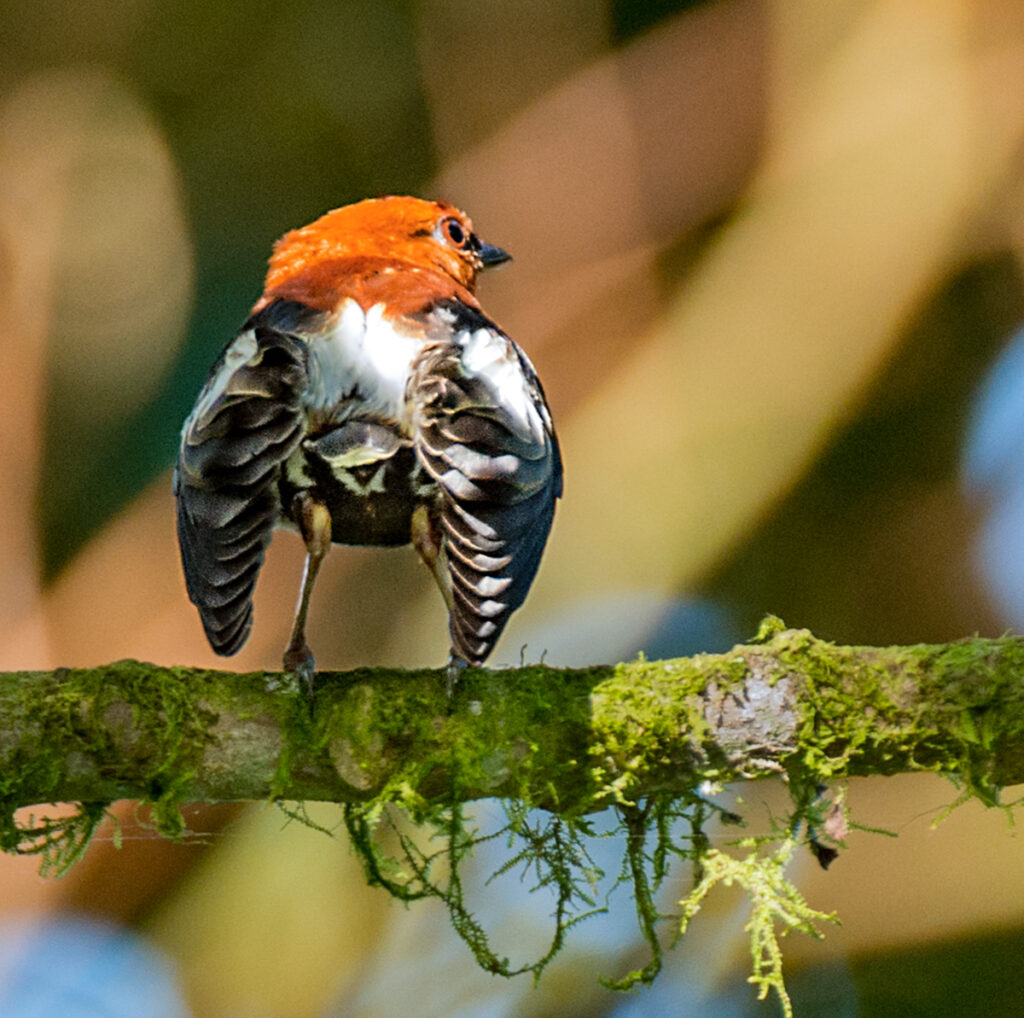
As manakins go, the Club-winged is pretty but not the brightest or colorful of the family. Males have a ruby red cap and deep chestnut body plumage with back and white disheveled wings. The wings look disheveled because they contain some of the most uniquely formed feathers in all of the bird world. The 5th primary feather of each wing is crooked, and can overlap the 6th primary feather. The 6th feather is swollen (club-shaped) and has a row of prominent bumps. The 7th primary is also weirdly swollen. Research by Kim Bostwick and Richard Prum used high-speed videography and found that these manakins were singing with their wings, producing sounds by rapidly rubbing these modified feathers behind the bird’s back. Other birds make mechanical sounds with their feathers, but none quite like this manakin. The manakins rub that 5th primary like a violin bow across the 6th feather, where each bump vibrates like the tines of a comb when strummed, and then the sound resonates in both the 6th and 7th swollen feathers. This process of sound production is called stridulation, and among birds, only the Club-winged Manakin can make sound this way. Stridulation is much more common among insects like crickets, katydids and cicadas.
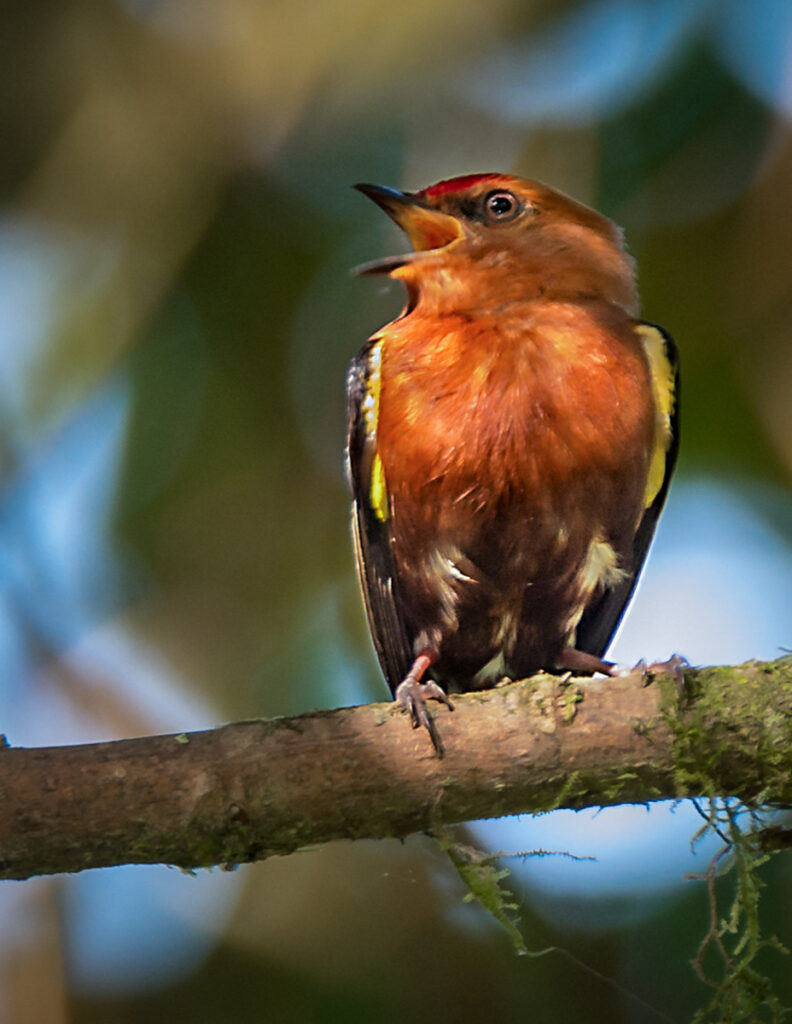
Meanwhile, the ability of male Club-winged Manakins to stridulate has a dark side and comes with a cost to both the male and female manakins themselves. To support this unusual sound production, the wing bones of males have become solid (unlike the hollow wings bones of most other flying birds), hurting their ability to fly and possibly reducing their survival. Males are awkward flyers, but it makes some sense that they might trade off some flight inefficiency to be able to mate. By favoring beautiful males that are less capable of flight and survival, females are also making their daughters evolve maladaptive wing bones and feathers for flight and survival. Females have swollen but hollow wing bones, because their bones begin forming in the egg before their bodies differentiate sexually. Ossification of bones happens later in development, allowing females to keep their bones hollow.

One of the best places to see the Club-winged Manakin is at Buenaventura Reserve, conserved by Fundación Jocotoco Ecuador, and where the Umbrellabird Lodge welcomes visitors. There is much more to enjoy here aside from the Club-winged Manakins, including a much larger lekking bird – the Long-wattled Umbrellabird, and other globally threatened species like the El Oro Parakeet and Ecuadorian Tapaculo. The lodge’s hummingbird feeders can be overwhelming with hummingbirds jostling for access. Hummingbirds like the Violet-bellied Hummingbird and Green-crowned Brilliant, are among those that frequent the feeders.
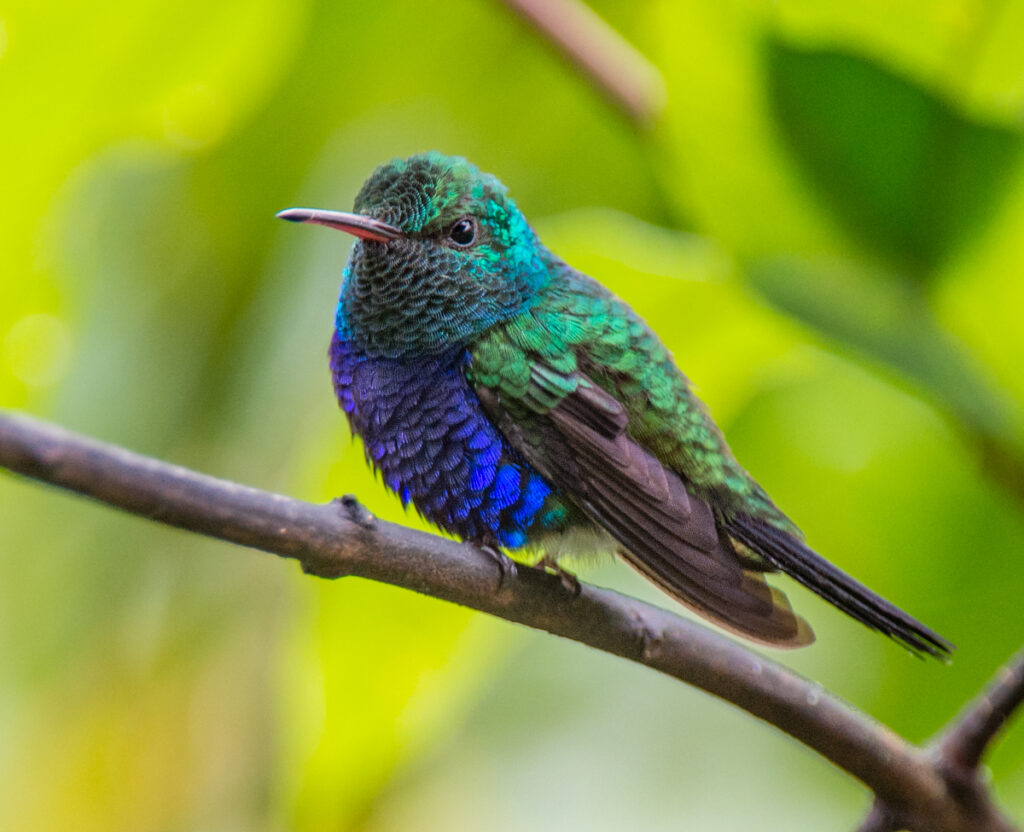
Photographers and birdwatchers interested in visiting Buenaventura Reserve and staying at Umbrellabird Lodge can learn more and make reservations through Jocotours. American Bird Conservancy has long supported our partner Fundación de Conservación Jocotoco in Ecuador, including land acquisition, reforestation, capacity building and promoting tourism through ConservationBirding at Buenaventura Reserve. Additional information on birding Fundación Jocotoco reserves in southern Ecuador is well presented in the following recent articles:
- Córdova Saeteros, M. L. 2020. Jocotoco’s southern circuit. Neotropical Birding. 27:15-29.
- Lebbin, D. J. & M. L. Córdova Saeteros. 2021. The Birding Jewels of Southern Ecuador: Using Ecotourism to Save Threatened Species. Birding 53(7): 52-60. Available online here.
